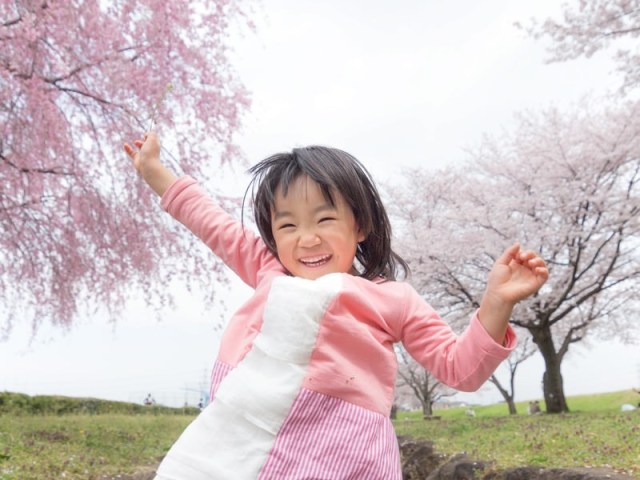
Let’s celebrate Japan’s Children’s Day by learning how to talk children in Japanese.
In Japan, May 5 is a holiday called Children’s Day. In Japanese, it’s “Kodomo no Hi,” and the translation is pretty straightforward: kodomo means “children,” no is equivalent to “’s,” and hi is “day.”
But kodomo is just one of many ways to say “children” in Japanese, so with today being Children’s Day, let’s take a look at some of them, what makes them different, and when each is used.
1. Kodomo
“Hey, didn’t we already cover this? You said kodomo means ‘children,’ right?” That’s true, I did, but in a convenient twist, it also means “child.” That’s because Japanese uses the same words for both the singular and plural forms of a noun.
Kodomo is the most common, broadly used word for “children” or “kids.” You can use it in just about any context or conversation and it won’t sound particularly weird or out of place.
2. Ko
Ko is the even shorter version of “child,” written with just the first of the two kanji characters used for kodomo. While the meaning of ko and kodomo are the same, there’s a difference to be aware of in how they’re used, which is that ko is usually used to talk about a specific child or children, not children in abstract or collective terms.
So if you want to say “That kid loves ramen,” you could use either ko or kodomo (“Ano ko/kodomo wa ramen ga suki desu”). But if you wanted to say “Kids [in general] love ramen,” kodomo would sound natural, but just ko wouldn’t. So while kodomo is the longer word, it tends to be more useful than ko.
3. Chibikko
Chibi, meaning “tiny,” is one of those words that’s seeped into the vocabulary of overseas Japanophiles in recent years, with overseas anime fans using it to describe scaled-down, cuteness-up versions of characters. The same sentiment applies to combining chibi with ko, making chibikko a word for when you’re not just talking about kids, but specifically “cute little kids,” sort of like “little tykes” in English.
As a side note, chibisuke is a variant of chibikko. The nuance of “cute little kid” is the same, but -suke is a traditional ending for male names in Japan, so chibisuke is used for talking about boys, akin to “cute little guy.”
4. Jidou
In contrast to the casual tone of chibikko, jidou is a very proper-sounding term. It’s the word used to talk about things such as “children’s education” (jidou kyouiku), “children’s welfare” (jidou fukushi), and “child psychology” (jidou shinrigaku), and other societal senses. On the other hand, it’d sound weirdly stuffy to use jidou in our above example sentence about a kid eating ramen, or to use it when talking about a group of cute kids playing in the park.
5. Gaki
And jumping back to casual vocabulary, but with a very different tone from chibikko, we’ve got gaki, Japanese’s version of “brat.”
Originally, gaki is written with the kanji 餓鬼, which translate literally as “hungry demon,” which should give you an idea of the dim view of the kids in question in the eyes of the person saying/writing it. Nowadays, in written form you’re more likely to see it rendered in phonetic katakana script. Katakana is usually used for loanwords, but its angular lines make it a good fit for gaki’s harsh sound. Speaking of harshness, when someone has really had it up to here with those brats, you might hear them step their choice of words up to kuso gaki, or “shit brats” or “shitty little kids.”
That said, gaki doesn’t always carry a sense of genuine dislike for the kids being talked about. Some people use it as a gruff term of endearment, sort of like “rugrat” in English. Even then though, it’s probably a good idea to use it sparingly, always with a smile, and never with the kuso modifier stuck on the front of it.
Top image: Pakutaso
Insert images: SoraNews24
● Want to hear about SoraNews24’s latest articles as soon as they’re published? Follow us on Facebook and Twitter!
Follow Casey on Twitter, where he’s always in the mood for Japanese linguistics.

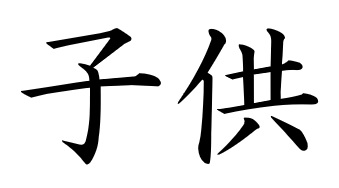
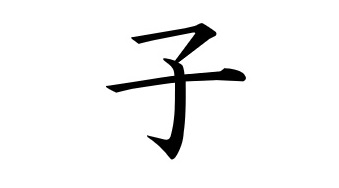


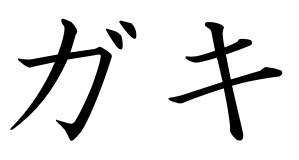
 New Japanese mascot character: A train station monster that grabs children who don’t mind the gap
New Japanese mascot character: A train station monster that grabs children who don’t mind the gap Japanese Twitter user illustrates the difference between how men and women define a “cute girl”
Japanese Twitter user illustrates the difference between how men and women define a “cute girl” Eternal Shojo Cafe opens in Tokyo, serves up ‘90s anime nostalgia by the plateful
Eternal Shojo Cafe opens in Tokyo, serves up ‘90s anime nostalgia by the plateful Japan’s Uncle Fist loses money every week selling takoyaki to kids for just 10 yen, doesn’t care
Japan’s Uncle Fist loses money every week selling takoyaki to kids for just 10 yen, doesn’t care Japanese film pros ranked their top movies to show kids, with Ghibli titles sweeping the top 3
Japanese film pros ranked their top movies to show kids, with Ghibli titles sweeping the top 3 McDonald’s new Happy Meals offer up cute and practical Sanrio lifestyle goods
McDonald’s new Happy Meals offer up cute and practical Sanrio lifestyle goods All-you-can-drink Starbucks and amazing views part of Tokyo’s new 170 meter-high sky lounge
All-you-can-drink Starbucks and amazing views part of Tokyo’s new 170 meter-high sky lounge Studio Ghibli glasses cases let anime characters keep an eye on your spectacles
Studio Ghibli glasses cases let anime characters keep an eye on your spectacles Disney princesses get official manga makeovers for Manga Princess Cafe opening in Tokyo
Disney princesses get official manga makeovers for Manga Princess Cafe opening in Tokyo Studio Ghibli releases new action figures featuring Nausicaä of the Valley of the Wind characters
Studio Ghibli releases new action figures featuring Nausicaä of the Valley of the Wind characters Hamster abandoned at Tokyo ramen restaurant gets new home
Hamster abandoned at Tokyo ramen restaurant gets new home A visit to the best UFO catcher arcade in the universe!
A visit to the best UFO catcher arcade in the universe! The oldest tunnel in Japan is believed to be haunted, and strange things happen when we go there
The oldest tunnel in Japan is believed to be haunted, and strange things happen when we go there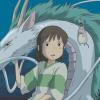 Haku is…Chihiro’s dead brother? Studio Ghibli fans blown away by Spirited Away theory
Haku is…Chihiro’s dead brother? Studio Ghibli fans blown away by Spirited Away theory Gackt lashes out at Cool Japan: “Almost no results of Japanese culture exported overseas”
Gackt lashes out at Cool Japan: “Almost no results of Japanese culture exported overseas” More foreign tourists than ever before in history visited Japan last month
More foreign tourists than ever before in history visited Japan last month Starbucks reopens at Shibuya Scramble Crossing with new look and design concept
Starbucks reopens at Shibuya Scramble Crossing with new look and design concept Beautiful new Final Fantasy T-shirt collection on the way from Uniqlo【Photos】
Beautiful new Final Fantasy T-shirt collection on the way from Uniqlo【Photos】 Is the new Shinkansen Train Desk ticket worth it?
Is the new Shinkansen Train Desk ticket worth it? Foreign English teachers in Japan pick their favorite Japanese-language phrases【Survey】
Foreign English teachers in Japan pick their favorite Japanese-language phrases【Survey】 Beautiful Sailor Moon manhole cover coasters being given out for free by Tokyo tourist center
Beautiful Sailor Moon manhole cover coasters being given out for free by Tokyo tourist center Studio Ghibli releases Kiki’s Delivery Service chocolate cake pouches in Japan
Studio Ghibli releases Kiki’s Delivery Service chocolate cake pouches in Japan Japan’s bone-breaking and record-breaking roller coaster is permanently shutting down
Japan’s bone-breaking and record-breaking roller coaster is permanently shutting down New definition of “Japanese whiskey” goes into effect to prevent fakes from fooling overseas buyers
New definition of “Japanese whiskey” goes into effect to prevent fakes from fooling overseas buyers Our Japanese reporter visits Costco in the U.S., finds super American and very Japanese things
Our Japanese reporter visits Costco in the U.S., finds super American and very Japanese things Studio Ghibli unveils Mother’s Day gift set that captures the love in My Neighbour Totoro
Studio Ghibli unveils Mother’s Day gift set that captures the love in My Neighbour Totoro Domino’s Japan now sells…pizza ears?
Domino’s Japan now sells…pizza ears? New Japanese KitKat flavour stars Sanrio characters, including Hello Kitty
New Japanese KitKat flavour stars Sanrio characters, including Hello Kitty One of Tokyo’s most famous meeting-spot landmarks is closing for good
One of Tokyo’s most famous meeting-spot landmarks is closing for good Kyoto creates new for-tourist buses to address overtourism with higher prices, faster rides
Kyoto creates new for-tourist buses to address overtourism with higher prices, faster rides Sales of Japan’s most convenient train ticket/shopping payment cards suspended indefinitely
Sales of Japan’s most convenient train ticket/shopping payment cards suspended indefinitely Sold-out Studio Ghibli desktop humidifiers are back so Totoro can help you through the dry season
Sold-out Studio Ghibli desktop humidifiers are back so Totoro can help you through the dry season Japanese government to make first change to romanization spelling rules since the 1950s
Japanese government to make first change to romanization spelling rules since the 1950s Ghibli founders Toshio Suzuki and Hayao Miyazaki contribute to Japanese whisky Totoro label design
Ghibli founders Toshio Suzuki and Hayao Miyazaki contribute to Japanese whisky Totoro label design Doraemon found buried at sea as scene from 1993 anime becomes real life【Photos】
Doraemon found buried at sea as scene from 1993 anime becomes real life【Photos】 Tokyo’s most famous Starbucks is closed
Tokyo’s most famous Starbucks is closed One Piece characters’ nationalities revealed, but fans have mixed opinions
One Piece characters’ nationalities revealed, but fans have mixed opinions We asked a Uniqlo employee what four things we should buy and their suggestions didn’t disappoint
We asked a Uniqlo employee what four things we should buy and their suggestions didn’t disappoint Princesses, fruits, and blacksmiths: Study reveals the 30 most unusual family names in Japan
Princesses, fruits, and blacksmiths: Study reveals the 30 most unusual family names in Japan How should a guy say “I” in Japanese? Japanese women give their opinions【Survey】
How should a guy say “I” in Japanese? Japanese women give their opinions【Survey】 Japan slowly begins to openly discuss crossdressing men in heterosexual relationships
Japan slowly begins to openly discuss crossdressing men in heterosexual relationships Elegant new bar and club space especially for crossdressers to open in Tokyo
Elegant new bar and club space especially for crossdressers to open in Tokyo The most awesome anime fan art is fan art that’s also traditional Japanese sweets【Photos】
The most awesome anime fan art is fan art that’s also traditional Japanese sweets【Photos】 Tokyo government announces new name for maternity/paternity leave, hopes to change attitudes
Tokyo government announces new name for maternity/paternity leave, hopes to change attitudes Twitter users say Japanese Prime Minister’s name is hiding in the kanji for Japan’s new era name
Twitter users say Japanese Prime Minister’s name is hiding in the kanji for Japan’s new era name Japanese mom praises hard-studying teenage son…for his Pokémon notes?!?
Japanese mom praises hard-studying teenage son…for his Pokémon notes?!? We make anime food from Studio Ghibli movie Laputa: Castle in the Sky
We make anime food from Studio Ghibli movie Laputa: Castle in the Sky The 10 most attractive Japanese women’s names, as chosen by dating app users
The 10 most attractive Japanese women’s names, as chosen by dating app users 11 different ways to say “father” in Japanese
11 different ways to say “father” in Japanese Pokémon Center apologizes for writing model Nicole Fujita’s name as Nicole Fujita
Pokémon Center apologizes for writing model Nicole Fujita’s name as Nicole Fujita New Japanese gacha capsule vending machine toys bring you sheep’s clothing to dress your cats in
New Japanese gacha capsule vending machine toys bring you sheep’s clothing to dress your cats in Foreigners in Japan vote for the best-looking katakana character
Foreigners in Japan vote for the best-looking katakana character
Leave a Reply